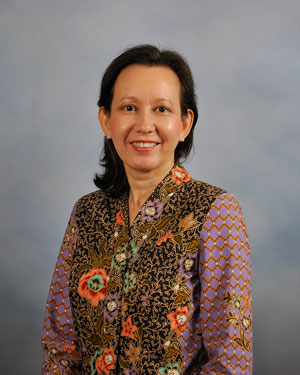
TREAT Asia and amfAR investigator Dr. Ananworanich is researching the impact of treating HIV-positive infants as soon as possible after birth.
In March, twelve leading pediatric HIV researchers, immunologists, and other scientists came together in Las Vegas, Nevada, for a second amfAR think tank to discuss progress in the search for a cure for children living with HIV. The first think tank took place in San Francisco, California, in 2012, nearly a year before the case of the Mississippi baby1 brought international attention to pediatric cure research and galvanized the field. This year’s think tank participants sought to collectively identify new avenues of investigation that can best build upon recent breakthroughs.
“Data derived from the Mississippi baby and other studies of infant humans and monkeys suggest that very young immune systems are quite different from those of older children and adults and may respond differently to HIV,” says Dr. Jeffrey Laurence, amfAR's senior scientific consultant. “The goal of the think tank was to discuss ways to identify these differences, which could prove an important clue to attacking the HIV reservoirs that remain latent in cells and are a key impediment to curing AIDS.”
One area of particular interest to the group was research that could provide a better understanding of how initiating antiretrotival therapy (ART) during the first few weeks after infection, a period known as acute infection, impacts both the immune system’s response to HIV and the development of the latent reservoir—and allows some patients, like the Mississippi baby,1 to experience HIV remission.
 Dr. Jintanat AnanworanichDuring the think tank, Dr. Jintanat Ananworanich, a TREAT Asia and amfAR investigator and associate director for therapeutics research at the U.S. Military HIV Research Program (MHRP), presented her work investigating the impact of early treatment in both adults and children. In a new study, currently in the enrollment phase, Dr. Ananworanich is researching the treatment of HIV-positive infants as soon as possible after birth.
Dr. Jintanat AnanworanichDuring the think tank, Dr. Jintanat Ananworanich, a TREAT Asia and amfAR investigator and associate director for therapeutics research at the U.S. Military HIV Research Program (MHRP), presented her work investigating the impact of early treatment in both adults and children. In a new study, currently in the enrollment phase, Dr. Ananworanich is researching the treatment of HIV-positive infants as soon as possible after birth.
“The think tank really highlighted the issues we should be focusing on to achieve an HIV cure in children, and I hope to collaborate on our research project with some of the immunologists who attended,” says Dr. Ananworanich. “We also highlighted the challenges we are facing, like the difficulties in successfully identifying and treating these infants early in many parts of the world.”
The majority of HIV-positive infants are born in resource-limited settings where access to the ART needed to prevent mother-to-child transmission is often lower than in other settings, and where there are fewer resources for testing HIV-exposed infants early or treating those who test positive. This makes it more difficult for researchers to conduct studies that require large-scale early identification and treatment of infants.
Thailand has long been a global leader in reducing rates of mother-to-child transmission, and in 2014, the government began recommending that doctors provide HIV-exposed infants with full treatment doses of three-drug ART at birth to help prevent infection. Because most infants are infected around delivery, this ensures that they are treated during acute infection. However, challenges remain in implementing the new guidelines. Not all exposed infants are receiving the laboratory testing needed to detect early infection, and many doctors lack experience with starting infants on immediate treatment.
For her study, Dr. Ananworanich is working closely with Dr. Thanyawee Puthanakit from Chulalongkorn University, the Thai Ministry of Public Health, and the U.S. Centers for Disease Control and Prevention to train staff at hospitals around the country on best practices for identifying, testing, treating, and monitoring HIV-exposed infants. She plans to enroll up to 225 HIV-positive infants in the study and hopes her findings will provide further evidence that early ART reduces the size of HIV reservoirs and will help advance the search for a cure.
For more information about the cure-focused research funded by amfAR, visit www.curecountdown.org.
1 The Mississippi baby was placed on antiretroviral treatment (ART) at birth, but stopped receiving it for two years. She is now back on ART, but this was the first case of an individual living so long off treatment without detectable HIV virus.